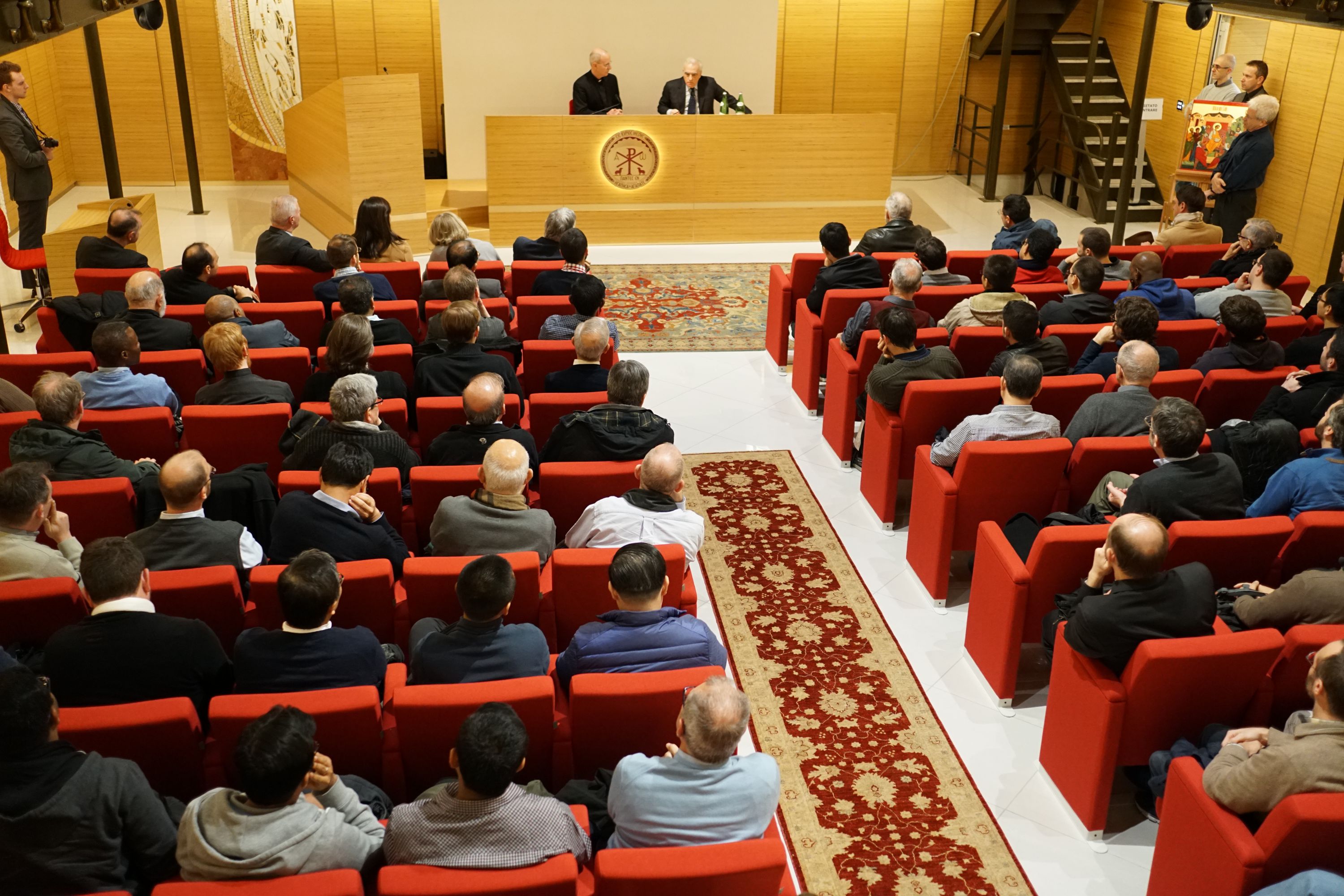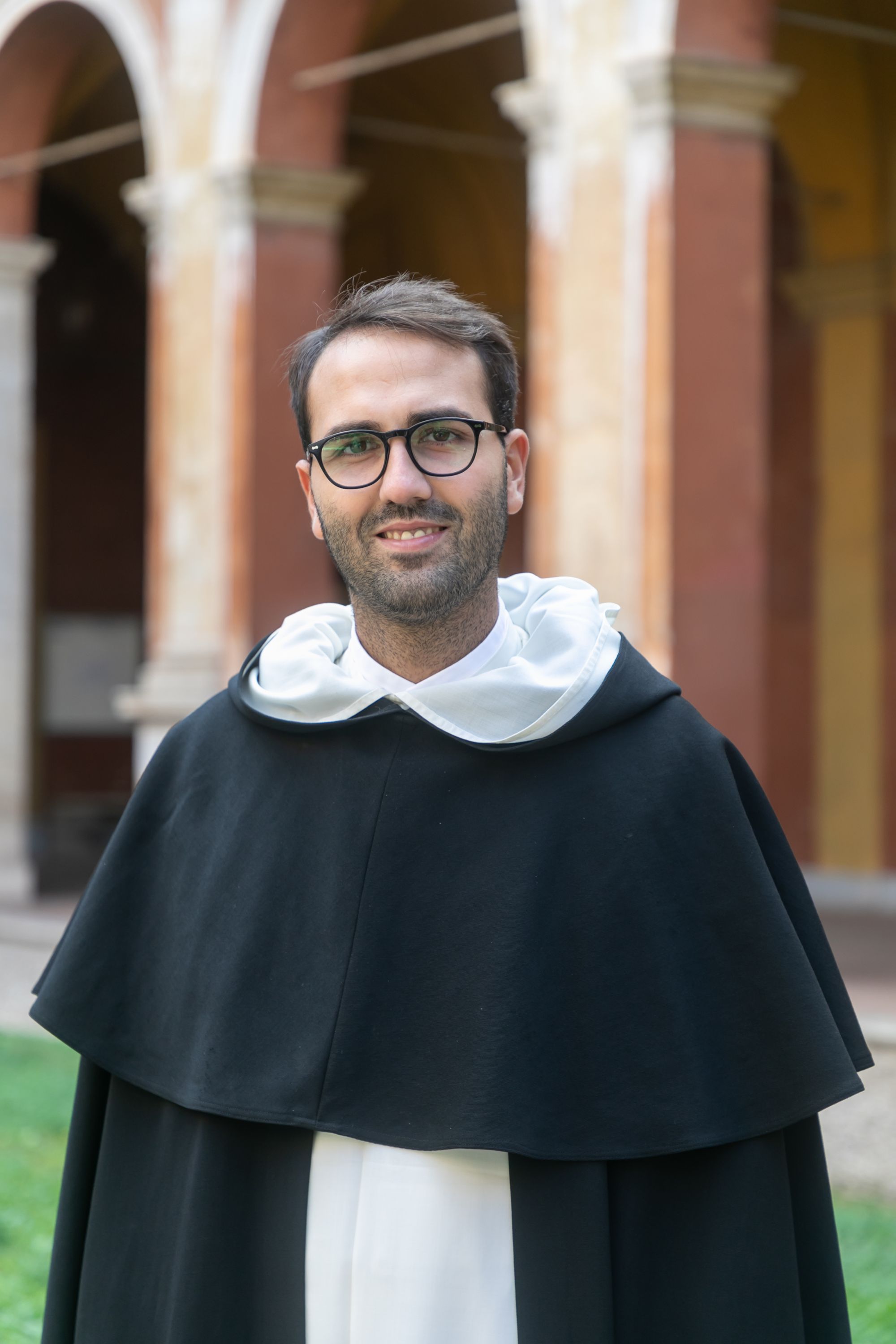- Home
- La Gregoriana
- 64 - Peace be with you all
- Opening up to new geographical and academic horizons
Share:

The students of the Pontifical Oriental Institute
belong to different traditions and cultures.
Studying together and sharing is mutually enriching,
leading to human and spiritual growth
The Pontifical Oriental Institute was founded by Pope Benedict XV on 15 October 1917, just a few months after the establishment of the Congregation for the Oriental Church, by the motu proprio Orientis Catholici as a “suitable seat of higher studies on Oriental matters”. In 1922, Pope Pius XI entrusted it to the Society of Jesus to further its specific mission of service to the Eastern Churches. Who are its students today? What challenges are they facing, what dreams are they pursuing? We asked some of them.
Making the Eastern Churches known in Taiwan
My name is Maria Hsu, I come from Taiwan and was baptised in the Latin Rite Catholic Church. I am a member of the Focolare Movement. I work as a translator for the Taiwanese Court of Justice and for the “Paoline” editions and other Catholic publishing houses.
Thanks to my job as a tour guide for a travel agency, I am now a doctoral student in the History Department of the Faculty of Eastern Christian Studies at the Pontifical Oriental Institute. In 2019, I accompanied a group of Taiwanese pilgrims on a retreat at Chevetogne Abbey in Belgium. It was my first introduction to the Byzantine Rite, which I immediately felt drawn to and became immersed in. To deepen my knowledge of this tradition, the monks recommended that I go to Rome. I was there on a business trip and I happened to see the icon of Christ Pantocrator on the door of the Pontifical Oriental Institute. I felt compelled to enter the building: I am sure it was a sign from God for my vocational journey.
The first year of my program was dedicated to Byzantine studies, while in the second year the Dean gave me permission to begin my doctorate on the Syriac Churches, with a particular focus on the Eastern Church in China (Jingjiao [教] in Chinese), where the first missionaries arrived in the 7th century. I am very enthusiastic about these new studies and research, which are so deeply connected to my own roots. Not only has this allowed me to become academically trained in the subject, I have also learned the ancient ecclesiastical languages, including Latin, Greek, Syriac, Sogdian (an ancient language spoken in Central Asian regions), and Arabic, which helps me in my study of manuscripts and in-depth research. My aspiration is to present an overview of the journey of the Church of the East along the Silk Road, from Mesopotamia to China under the Tang Dynasty. (7th-10th century).
My dream is consistent with the continuation of translations and research in this field, for the benefit of all those wishing to gain a better understanding of the Churches of the East, and to strengthen the relations between the Churches of the East and the Catholic Church, especially for a Chinese-speaking audience. In fact, in my country, the Eastern Churches are still largely unknown or considered heretical. My studies at the Pontifical Oriental Institute have made me realize that much work needs to be done to bring clarity. I hope that what I've learned will make a contribution in the Catholic academic realm and in Taiwanese communities.

The richness of Eastern Canon Law
My name is Fr. Gianluca Nicola Maria Lopez O.P. I am a Dominican priest of the Province of St. Thomas Aquinas in Italy (Southern Italy and Sicily). The Christian East is very dear to my Province. For example, the community of Preachers of the Basilica of St Nicholas (Bari), where the relics of this saint so dear to the entire Christian East are venerated, is involved in many activities related to the ecumenical mission. That is why my Province, in order to ensure the continuity of this ecumenical mission, is committed to training some of its youngest friars in Eastern studies. Therefore, coming from the Archdiocese of Bari-Bitonto, I completed a Licentiate in Eastern Canon Law at the Pontifical Oriental Institute.
For me, studying at the Oriental Institute has not only meant cultural and intellectual enrichment, or having the opportunity to engage with other cultures. Above all, it has been a source of human and spiritual growth. Here we touch with our senses the “Catholic” beauty of our Church: Latin Church and Eastern Catholic Churches. In studying at the Pontifical Oriental Institute, we learn to reason using a broader variety of categories and nuances. For example, a Latin Catholic will be familiar with the hierarchy of the Church, namely the Pope, the College of Cardinals, bishops, presbyters, deacons, and the laity, together with the holy People of God. However, the state of men and women religious is not separate from that of the clergy and the laity, but derives from them (cf. CIC, c. 207 § 2). In contrast, the approach to Eastern Christianity takes due account of the four categories of Eastern Catholic Churches. These are: the Patriarchal Church, the Major Archiepiscopal, the Metropolitan sui iuris and the other Churches sui iuris. It should also be acknowledged that in Eastern Christianity the religious state is a state in its own right, so that there are three states: clerical, lay and religious (the CCEO devotes three titles to them, X-XII).
Another example: the Eastern Churches arise from five great ancient traditions: Alexandrian, Antiochian, Armenian, Chaldean and Constantinopolitan. From these come the rites which are the liturgical, theological, spiritual and disciplinary patrimony of each Eastern Church (cf. CCEO, can. 28). Ignoring this means failing to separate the concept of rite from that of the Church sui iuris, thereby identifying the Eastern Catholic Churches with the rite, just as one would identify the Latin Church with the Roman Rite (which, while being the most widespread, is not the only one). I was fascinated by the richness, complexity and beauty contained in the terminology of the Church sui iuris (cf. CCEO, can. 27).


